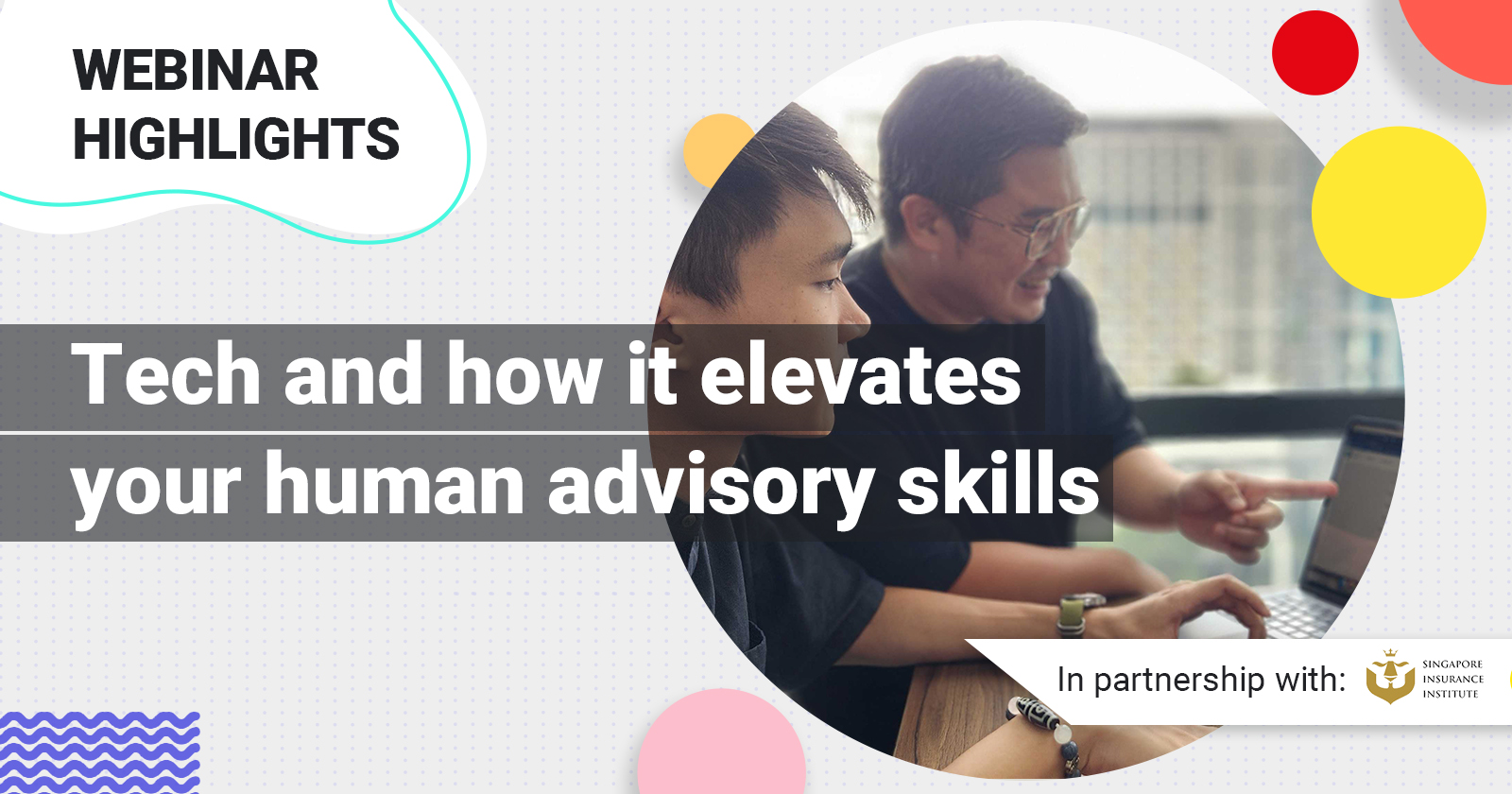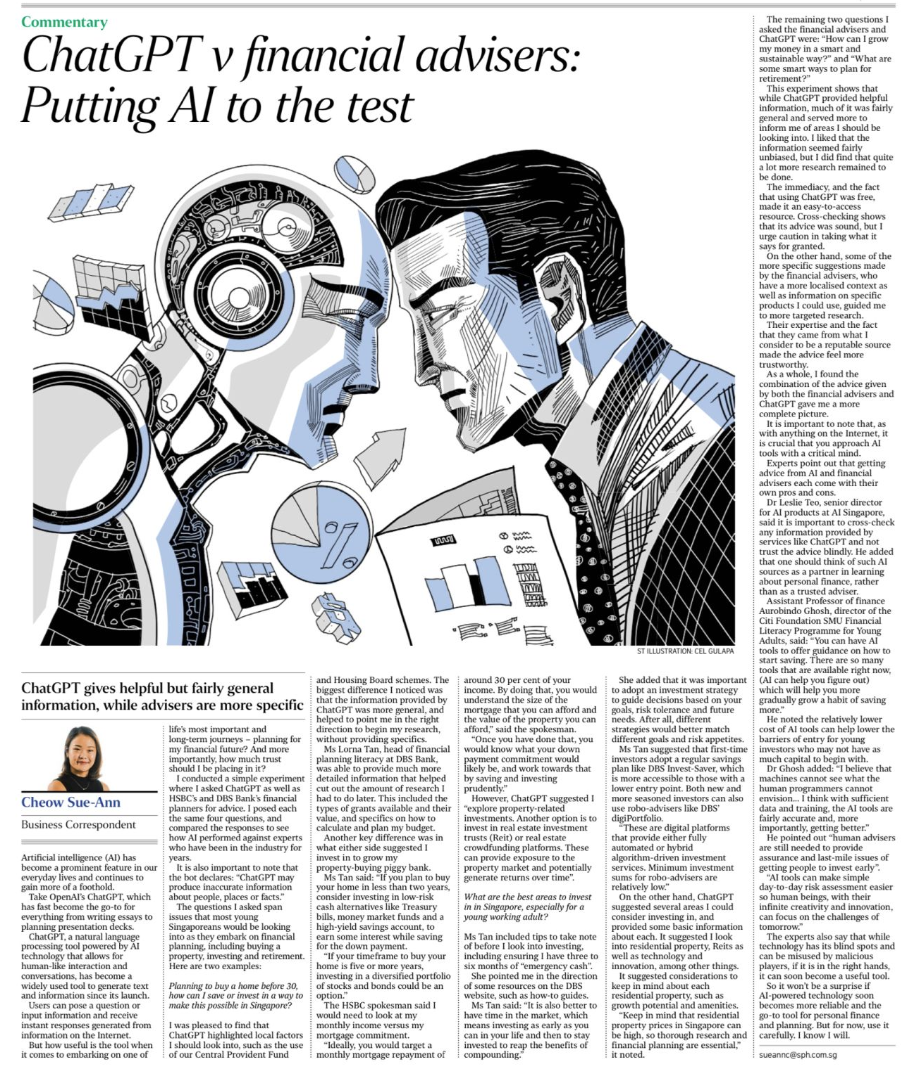
Thank you to everyone who attended this webinar that happened on 29 Aug ‘23! As always, fret not if you weren’t able to attend. This article will bring you highlights of what was shared at the webinar! With the theme of the webinar being ’Tech and how it elevates your human advisory skills’, we broke the webinar down into the following key segments: The webinar started with a case study, referencing a research paper. It was shared that one of the key values of an intermediary is in the advice that they can give. Following are some of the key points quoted from the research paper ‘Advancing the Art of Advisory’: This was backed by the fact that 57% of millennial investors feel that technology reduces the personal touch and face-to-face interactions in their wealth relationships – considerably higher than the overall global age group of 39%. It was then shared that the human touch remains indispensable with the following points used to expand on this thought: This was backed by the fact that 72% of investors prefer to retain the ‘human touch’ in their wealth planning journey. The speaker concluded that advisors are a trusted source of advice sharing 66% of retail investors consider their primary financial advisor as the most trusted source of advice, compared to other sources. With the above as a backdrop to the segment, the speaker moved into sharing the following points on what intermediaries actually bring to the table that is so valuable. Speaker then mentioned that this begs the question… what makes a ‘new age intermediary’? It was then shared that the new age intermediary The segment concluded with the speaker sharing that there is a core difference between being an advisor versus just an order taker. There are 4 types or stages of relationship a client At stage 4: Essentially, the intermediary is the critical link between insurers and the end policyholder. You offer advice and key information in connection with the negotiation or sale of insurance. Intermediaries are players in the ecosystem with broad knowledge of BOTH the product and the marketplace. Moving into the next segment, the speaker sought to share on the topic of What tech cannot do He quoted the following two paragraphs from the article to broaden on the above point: The speaker moved on and shared that this was especially so in Commercial Insurance where in Europe 75% of complex insurance ‘researched online, purchased offline’ while In the US Intermediaries accounted for 70.8% of commercial premiums. Diving deeper into this, the speaker shared about key stats in a research where: Some perspectives of why this could be the case were shared as well and it was mooted that this could be part of our nature in relation to fear and optimism bias. Optimism Bias: Fear: So, what can tech actually do to help intermediaries in their business? Why is tech important? The first reason was on how TQ is as important as IQ and EQ TQ = Technology Quotient An intermediary with high TQ: It was shared that this is not a matter of genes but that of attitude. It is training oneself to be receptive to adapt and flourish to advancement. Tech helps intermediaries do more by working less, drives business faster with automation and ultimately, empowers intermediaries to spend more time on more important matters like providing advice to the customer. This led to the next point – that tech frees intermediaries from mundane repetitive administrative actions and allows them more time to be an advisor not an order taker; to be able to take a ‘client-first’ mindset. To always start with having the client’s problem in mind first and not from a position of ‘how can I close the deal’. It was added that when this is done right, the client will appreciate the extra effort placed in assisting them and that is really the stage intermediaries want to be on with your clients; being an advisor! The new age intermediary cannot be replaced and the following thoughts were shared. 1) From the insurer’s perspective, there is added value to supercharging the efficiency of the sales force not replacing them 2) Insurtechs are increasingly looking to work with and for intermediaries and not disrupt just for the sake of it 3) Ultimately, the value that intermediaries bring to the table is abundantly clear and it makes sense that tech is used to enhance such In conclusion to the segment of the webinar, it was shared that technology has the power to complement, enable and support many of the core processes that underpin your work. Intermediaries save precious time that they can then use to focus on the core aspects of the business – serving and advising the client. The new age intermediaries who supercharge themselves with technology will not be replaced. Having shared about the core value that intermediaries bring to the table and how this blends with the available technology, the third segment of the webinar was focused on the ‘how’ of tech vis-a-vis helping intermediaries. Referring to the same research paper (Advancing the Art of Advisory) shared in the first segment of the webinar, the speaker shared that investors may not always believe that their financial advisor has their best interest at heart. Trust is a valuable trait in this instance. Based on the research paper, there were 3 vital tenets that would strengthen trust In addition to trust, it was also shared that knowledge of the advisor was key It was shared that it is important that intermediaries remain at the centre of their client’s life events as well Last but not least, the research paper called out that the ideal intermediary watches out for their investors, avoids risky decisions, and acts as a defence against misguided investments. More than half of investors see advisors or advisory teams as their primary relationship instead of their firms. With the above, the speaker then dived into how an intermediary can uncover the needs of their clients. It was shared that it is important to first understand the decision making process, which can be broadly classified into the following stages: The speaker then went deeper to share about stages 1, 2 and 5. When it comes to asking the right questions as per stage 2 and 5, the speaker shared 3 examples of ‘magic questions’ that could help intermediaries uncover needs of their clients better: The right questions help you uncover needs – this is mapped back to how a typical person makes a decision as well. The key point to takeaway is that it is your job to help your clients understand what he needs. Do not assume the client already has something in mind that is correct. The speaker then went into looking at reports and articles to further validate the idea that the industry values intermediaries with a ‘client-first’ mindset – where there is good value to support intermediaries with tech. Article referenced: 2022 insurance industry outlook Article referenced: How Agents and Insurtechs Can Work Together Article referenced: 5 reflections on the insurance industry in 2021 Article referenced: Embracing the Human Side of the Bionic Insurer Finally an example that was provided in how tech can be leveraged would be in the space of bespoke products vs packaged products A feedback that the team had gotten was that we should include the showcase of tangible features / functions that intermediaries can leverage; to be able to draw parallels between what has been shared and what can be used. The speaker did exactly that by sharing some of Surer’s features that help an intermediary digitally transform. Personal Website Builder Product Customisation and creating your own ‘package’ template Instant Quote Binding and issuing policies CRM features The parallels of tech helping to drive leads, qualification and speed in deal closing were drawn in relation to the above features was shared to be as follow: — Once again, here’s taking the opportunity to thank all our users who made time for this and we hope to see you again in our next Webinar! It is fuss-free. No credit card or payment required.
Did you know you can get instant quotes for car insurance from DirectAsia via Surer?
Find out more about DirectAsia car insurance products now or submit this form if you are interested to find out more about DirectAsia and to represent them!
Key highlights
Human advisory and its value
Case study: the need for the human advisor
What intermediaries bring to the table
The New Age Intermediary
Blending the best of both worlds – tech and human advisory
What tech CANNOT do

Using the above article as a case study, the speaker shared that while there has been buzz around AI and its undeniable ability, it was mentioned that digital tools can only help customers kick-start research. However, intermediaries are still required to provide good context both on a personal level and at the geographic level.
What can tech help with in your business
Why the new age intermediary cannot be replaced
Tech and how it frees you up to hone your advisory skills
Case study: Honing the craft of advisory
Uncovering the needs of your clients
Tech frees you up to have a ‘client-first’ mindset
Leveraging Insurtech: Surer case studies
Subscribe to our Telegram channel or stay tuned to our Facebook or LinkedIn pages to get updates on more of such initiatives!
Are you an Insurance intermediary? Sign up for free now!
Subscribe to our Telegram channel to get the most insightful articles delivered to you automatically!
